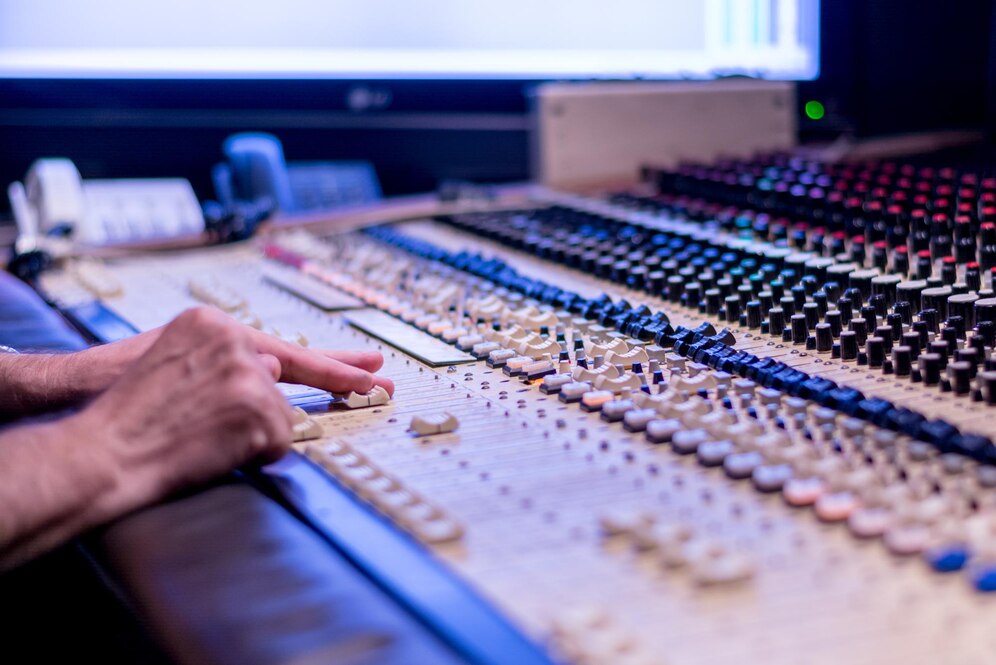The evolution of audio technology has significantly transformed the world of music production. One marked shift is seen in the transition from analog to digital mixing, stirring an enduring debate among music producers and audio engineers.
Understand the Differences: Analog and Digital Mixing Unveiled
In the grand scheme of audio production, the decision Comparing Analog vs. Digital Mixing is not black and white, and each offers unique benefits and drawbacks.
In-depth Look: Analog Mixing Benefits and Digital Mixing Advantages
Analog mixing benefits are largely related to its auditory elements. Analog mixers often present a certain “warmth” and richness to the sound they process, which many music professionals find pleasing and desirable. On the other hand, Digital Mixing Advantages lie in its precision, versatility, and the ability to easily edit or manipulate sound.
The Evolution of Mixer Technology: Analog to Digital
The Mixer technology evolution over the decades has been significant. Analog mixers dominated the music production landscape until the advent of digital technology. These powered a shift towards digital mixers that provide flexible, expandable, and convenient options for modern producers.
Delving Deeper: Sound Quality in Analog vs. Digital Mixing
Perceived Sound quality in analog vs. digital mixing is largely subjective and depends on various elements like the audio source, processing methods, and even listener’s personal preferences.
The Emotional Debate: Analog Warmth vs. Digital Precision
The divide between Analog warmth vs. digital precision reflects two distinct aesthetics in sound production. Analog tends to deliver a warmer, richer, and more organic sound, whereas digital proffers a clean, exact, and infinitely controllable output.
Audio Quality Metrics: Signal-to-noise Ratio in Mixing
The Signal-to-noise ratio in mixing highlights the difference between the intended signal and unwanted noise. Digital mixers significantly outperform their analog counterparts in noise minimization.
Mixing Console Comparison: Central Aspects to Consider
A Mixing console comparison should take into account aspects such as the console’s I/O capabilities, processing power, and user interface.
Analog Audio Processing: From EQ and Compression to Analog Tape Saturation
Analog audio processing techniques include the use of hardware equalizers, compressors, and amplifiers, each contributing to the much-loved ‘analog warmth.’ Analog tape saturation is another technique, adding pleasing harmonic distortions to the sound.
The Digital Cornerstone: Digital Audio Workstation (DAW) and its Capabilities
Central to digital mixing is the powerful Digital Audio Workstation (DAW), with capabilities such as multi-track recording, virtual instruments, slow-down technology, and a suite of digital effects.
Dissecting the Workflows: Analog vs. Digital Mixing Techniques
Workflow in Analog vs. Digital Mixing comprises distinctive steps in signal flow, audio processing, and recording techniques.
Analog Realm: The Latency-Free World and its Benefits
In the Mixing techniques in analog, one key advantage is the virtually zero-latency environment, allowing real-time monitoring and adjustments while recording.
Step into the Future: Real-time Processing in Digital Mixing
Digital mixing outshines analog with its real-time processing capabilities, including on-the-fly pitch correction, time-stretching, and countless other sound manipulations.
Gear Transition: Analog Gear Emulation in the Digital World
To attain the best of both worlds, the music industry has witnessed the rise of Analog gear emulation tools, digital plugins designed to mimic the characteristics of analog hardware.
Achieving Analog Warmth: Emulating Analog Tape Saturation Digitally
Digital tools can emulate the analog magic, including the beloved analog tape saturation, closely mimicking the harmonic distortions and compressions of the original analog gear.
Virtual Rising: The Rise of Virtual Instruments in Digital Mixing
The use of virtual instruments has significantly amplified the capabilities of digital mixing, enabling manipulation and creation of sounds beyond physical constraints.
Advances in Hybrid Solutions: The Best of Both Worlds
Hybrid solutions are gaining traction, merging the best of analog and digital worlds. This includes mixing board features such as analog summing and digital summing.

Mixing Board Features: From Analog Summing to Digital Summing
Mixing board features range from analog’s warm, punchy summing to digital’s clear, detailed summing. The choice between the two often depends on the desired sonic character.
Choice Matters: Audio Interface Selection for Quality Mixing
The choice of the audio interface can influence the overall quality of the mix, shaping the character and tone of the audio recorded.
Professionals’ Take: Pros and Cons of Digital Mixing
Despite the allure of analog, digital mixing’s flexibility and convenience sway many modern sound engineers. However, understanding the Pros and cons of digital mixing is crucial.
Unveiling the Advantages: Digital Plugins in Mixing
Digital Plugins in Mixing provide infinite sonic possibilities, from emulating vintage analog gear to creating novel, unheard sounds.
Navigating the Downsides: Latency in the Digital Mixing World
However, digital mixing is not without its challenges, the main one being latency, which can potentially disrupt the fluidity of the recording process. Nonetheless, advances in technology continue to mitigate this issue.
In conclusion, both analog and digital audio mixing have their strengths and choose based on factors such as budget, preferences, and specific project needs.


Leave a Reply